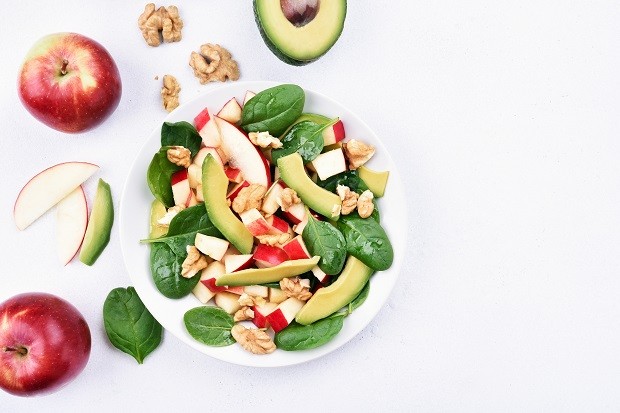10 Confessions and 4 Tricks for Treat Day

By Susan B. Sloane, BS, RPh, CDE
As a CDE (Certified Diabetes Educator) people often ask me, when is it okay to cheat on a diet? I don’t really like to use the word “cheat” because it sounds like you are doing something bad. Instead I like to think of it as a “treat” day. There are many ways to make our favorite not-so-healthy foods more nutritious. That is not to say that it’s okay have a treat every day, but it is okay to have an occasional treat when you eat it in a healthier way. In fact, it is quite unrealistic to never indulge; we have parties, picnics, and even cravings.
Here are 4 tricks I use to make an occasional treat healthier while still keeping it satisfying:
Trick 1: The Dilution Solution
Adding a little bit of the food you crave to healthier food can make all the difference.
1. I confess that I do miss my Cap’n Crunch cereal from time to time. I will occasionally “sprinkle” a small amount on my Shredded Wheat and will be satisfied with tasting that flavor every now and then.
2. I enjoy fruit juice from time to time; so, I dilute my juice with water 50:50 if I need the taste.
3. I love birthday cake, I must confess. So, when I’m at a party and I can’t resist, I have a small slice and pile on the fresh fruit with a dollop of yogurt.
4. If I want a piece of sweet and sour chicken, I get a small order and mix it with my healthy stir fry chicken and veggies (usually mix in 1-3 pieces). I also add fresh pineapple to make the dish “sweeter”.
Trick 2: Satisfying Substitutes
Finding healthier alternatives without sacrificing flavor is what I call a win-win situation!
5. Buckwheat pancakes are a heathier version of my old breakfast favorite. And instead of syrup, I use a little cinnamon and stevia for a touch of sweetness.
6. I love pizza, but opt for my cauliflower crust pizza, as it cooks up faster and is a lot crispi-er than even my regular crust pizza. If I do have a piece of regular pizza, I just pile on ex-tra veggies and/or lean protein.
7. I like bacon and sausage – so I choose turkey bacon and chicken sausage as healthier al-ternatives.
Trick 3: Nutrition Boosters
Similar to my “Dilution Solution”, this technique is about adding other foods to enhance the nutri-tional profile or to lower the glycemic index of a “cheat” food to make it a better choice.
8. I love PBJ’s so I add fresh sliced strawberries to my sandwich or make it open-faced. Sometimes I’ll even add a few slices of banana and a dollop of low-sugar jam. Almost a dessert!
9. I also love chocolate yogurt, so on occasion, I will have a small cup to indulge my choco-late craving, and “dilute” the yogurt with healthy almonds and berries.
Trick 4: A “Blue Moon” Treat
10. Lastly, yes, I do have a full-on small candy bar or even an ice cream sundae—not all the time of course—but “once in a blue moon”, I allow myself the real deal and have no guilt, as most of my choices are healthy ones! No deprivation.
But no matter what you eat, the important thing is to keep track of your carbs. The Dario app makes it easy! Each time you measure your blood sugar, simply tap “carbs” and add whatever foods you’ve eaten. With over 500,000 foods in the Dario database, counting your carbs is no longer a matter of guesswork. And over time, by tracking your foods together with your blood sugar measurements, you may see patterns, which can help point you towards getting better re-sults. Learn More
Discover Food Tricks for YOUR Body
Get the one-on-one help you need to find the techniques that work for you, based on your ex-pectations, your goals, and your lifestyle. It’s all here for you in a special Hand-in-Hand Coach-ing Package, available now.
By working with me, as a CDE, you’ll learn how to read between the numbers and understand more about how foods affect your unique body. Click here to learn more and sign up.
I look forward to meeting you!
About Susan Sloane
Susan B. Sloane, BS, RPh, CDE, has been a registered pharmacist for more than 29 years and a Certified Diabetes Educator for most of her career. Her two sons were diagnosed with diabetes, and since then, she has been dedicated to promoting wellness and optimal outcomes as a patient advocate, information expert, educator, and corporate partner.
Susan has published numerous articles on the topic of diabetes for patients and health care professionals. She has committed her career goals to helping patients with diabetes stay well through education.
Medical Disclaimer
The articles provided on this website are for informational purposes only. In addition, it is written for a generic audience and not a specific case; therefore, this information should not be used for diagnostic or medical treatment. This site does not attempt to replace the patient-physician relationship and fully recommends the reader to seek out the best care from his/her physician and/or diabetes educator.
- http://care.diabetesjournals.org/content/suppl/2015/12/21/39.Supplement_1.DC2/2016-Standards-of-Care.pdf (Accessed Jan 2017)
- Self-monitoring of blood glucose. American Diabetes Association. Diabetes Care 1994:1-17:81
- Nagi D, Gallen I. ABCD position statement on physical activity and exercise in diabetes. Practical Diabetes International. 2010;27(4):158–
- http://www.diabetes.org/food-and-fitness/food/what-can-i-eat/making-healthy-food-choices/alcohol.html (Accessed Jan 2017)
MK-0189 RevA







